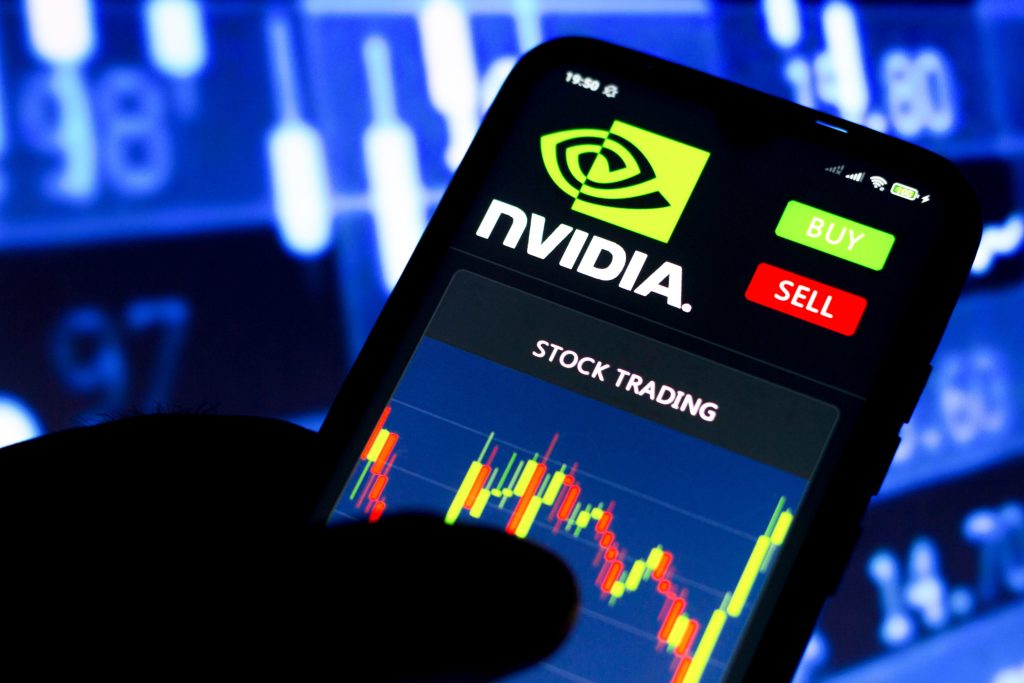Is NVIDIA Stock a Buy? Analyzing Trends, Predictions, and Market Insights for 2025

As the tech landscape continuously evolves, NVIDIA stands at the forefront of innovation, particularly in sectors like artificial intelligence and gaming. With its cutting-edge graphics processing units and a growing presence in data centers, NVIDIA has captured the attention of investors and analysts alike. But is NVIDIA stock a buy right now? In this article, we will dive deep into market trends, expert predictions, and insightful analysis, painting a comprehensive picture of what lies ahead for NVIDIA in 2025.
Whether you’re a seasoned investor or a newcomer eager to understand the dynamics of tech stocks, we’ll explore the potential growth drivers, challenges, and opportunities that make NVIDIA a compelling case to consider. Join us as we decipher the signals in the stock market and equip you with the knowledge to make informed investment decisions.
Overview of NVIDIA’s Financial Performance
NVIDIA has delivered explosive financial growth driven by AI demand. In FY2023, revenue stagnated at $26.97B due to crypto market declines and PC slowdowns. However, FY2024 saw a 125.9% revenue surge to $60.92B, with net income skyrocketing 581% to $29.76B. By FY2025, revenue doubled again to $130.5B, supported by data center dominance (Q4 2025 data center revenue: $35.6B)。 Net income reached $72.88B, with a 55.8% net margin, while gross margins hit 75%. Free cash flow also surged to $60.72B in FY2025, enabling aggressive stock buybacks ($33.7B in FY2025)。
The company’s fabless model keeps capital expenditures low (2.5% of revenue), allowing 195% return on invested capital (ROIC)。 With $116B in total assets and $72.88B in cash reserves, NVIDIA maintains a fortress balance sheet.
Key Trends Influencing NVIDIA Stock
1. AI Boom: Generative AI adoption (e.g., OpenAI, Meta) drives 409% data center revenue growth. Hopper and Blackwell GPUs power 90% of AI workloads.
2. Diversification: Expansion into autonomous vehicles (NVIDIA DRIVE), edge computing, and Omniverse metaverse platforms.
3. Semiconductor Shortages: Supply constraints for Blackwell GPUs may delay near-term growth.
4. Geopolitical Risks: U.S.-China trade tensions and export restrictions threaten market access.
5. Valuation Pressures: FY2025 P/E ratio of 38.95 raises concerns about overvaluation.
Predictions for NVIDIA Stock in 2025
Analysts project a wide range for 2025:
Bull Case: $521.94 (StockScan), driven by Blackwell adoption and AI demand.
Bear Case: $96.95 (CoinCodex), citing valuation corrections and supply bottlenecks.
Consensus: $150–$160, assuming 25–35% annual revenue growth.
By 2030, targets reach $450–$600, contingent on AI leadership and quantum computing breakthroughs.
Analyst Opinions and Market Sentiment
Bulls: Morgan Stanley and ARK Invest highlight NVIDIA’s “unmatched AI ecosystem” and 20%+ CAGR in AI infrastructure revenue.
Bears: Warn of competition (AMD’s MI300X) and cyclical semiconductor downturns.
Neutrals: UBS advises monitoring Q2 2025 guidance for Blackwell production scalability.
Market sentiment remains positive, with 79.48% of analyst reports showing bullish sentiment.
Competitive Landscape: NVIDIA vs. Its Rivals
| Metric | NVIDIA | AMD | Intel |
|---|---|---|---|
| AI GPU Market Share | 90% 16 | 8% 16 | <5% |
| Data Center Growth | 93% YoY 4 | 10% YoY 17 | Declining |
| Gross Margin | 75% 1 | 45% | 40% |
NVIDIA’s CUDA software ecosystem and vertical integration (Mellanox acquisition) create moats. However, custom AI chips from Google (TPU) and Tesla (Dojo) pose long-term threats.
The Role of AI and Technology Advancements
Generative AI: NVIDIA’s H100 GPUs train 80% of large language models.
Quantum Computing: Partnerships with quantum startups enhance simulation capabilities.
Autonomous Vehicles: NVIDIA DRIVE powers 35+ automakers.
Omniverse: Used by BMW and Siemens for industrial digital twins.
Blackwell GPUs, launching in Q2 2025, offer 5x faster AI training than predecessors.
Risks and Challenges Facing NVIDIA
1. Supply Chain: Reliance on TSMC for 5nm/3nm chip production.
2. Regulation: U.S. restrictions on AI chip exports to China.
3. Competition: AMD’s $4.9B acquisition of ZT Systems to boost data center capabilities.
4. Valuation: High P/E ratio (38.95) vs. industry average (22.3)。
5. Market Saturation: Slowing gaming GPU sales (-11% YoY in Q4 2025)。
Investment Strategies for NVIDIA Stock
1. Long-Term Hold: Capitalize on AI megatrends with 5–10-year horizons.
2. Dollar-Cost Averaging: Mitigate volatility via monthly investments.
3. Sector Rotation: Pair NVIDIA with undervalued semiconductor ETFs (e.g., SOXX)。
4. Event-Driven Plays: Trade earnings reports (next expected May 28, 2025)。
Conclusion: Is NVIDIA Stock Worth the Investment?
NVIDIA remains a cornerstone of AI-driven growth, with unmatched technology and financial resilience. While short-term volatility from supply chain issues and valuation concerns is likely, its leadership in generative AI, autonomous systems, and quantum computing positions it for long-term dominance. Investors comfortable with tech-sector risks should consider NVIDIA a core holding. As ARK Invest notes, “AI is eating software, and NVIDIA is holding the fork”。